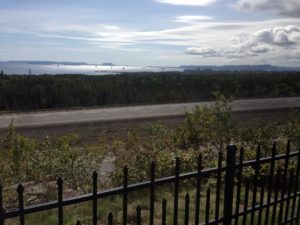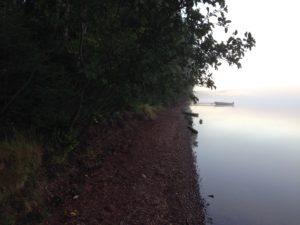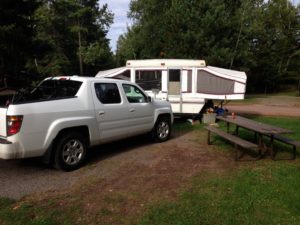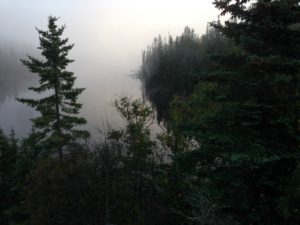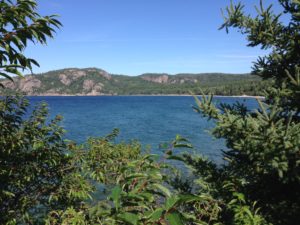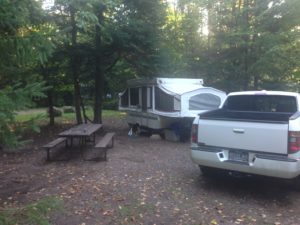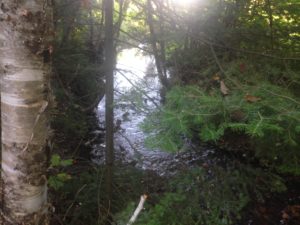Technically speaking it’s not really a peninsula. The land is split north to south by a large waterway connecting with the lake at both ends. It separates the twin towns of Houghton and Hancock, each perched on steep hills either side of the waterway, reminding me of smaller versions of Duluth. Houghton is the home of Michigan Tech University, feared rival of just about every Division 1 hockey team in America.
The peninsula is sporting the very first hints of fall color change and it’s dotted with small towns that are either harbor towns or towns historically tied to the copper mining and processing industry of years past. Many of the smaller roads are completely canopied and in some cases the trees are so close to the road they put reflectors on them for safer nighttime driving.
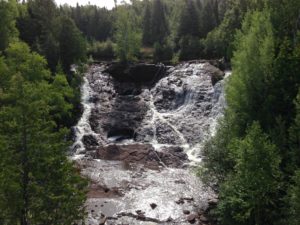
The Eagle River making it’s way to the lake. The beauty of the whole peninsula is undeniable. It is, as you might expect, a thriving tourist area.
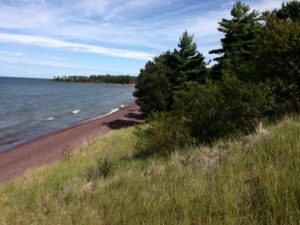
From what I’ve seen, the south shore of Lake Superior is quite different from the north shore in Minnesota. It’s almost completely lacking in the rugged rocky shores and ramparts of it’s opposite shore and boasts many more harbors and picturesque coves and inlets. There are scores of marinas big and small.
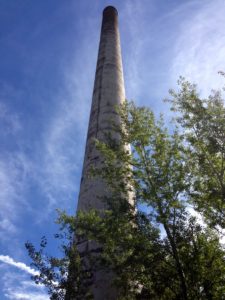
This is something you don’t see every day on your drive through the countryside. Even as heavily forested as it is here, I was glimpsing this stack from miles away. The picture can’t do justice to how immense this monolith is. This is the old site of the Mohawk Stamping Mill that sits on the edge of the town of Gay, which is named after a prominent mining official. Between this stack and the shoreline were remnants of massive foundations and footings with cutoff rebar that was five inches in diameter. The stamping mill, part of copper processing, was in operation from 1900 to 1932.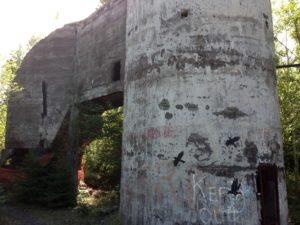
The town of Gay, which swelled to nearly two thousand at the mills height, followed the pattern of many mining towns, first booming and then slowly dissolving to almost nothing. In it’s peak years it had power, gas, and regular rail and mail service, which wasn’t all that common in remote areas back then. When the copper industry started to decline so did the town. Some residents stayed, supported by a large logging operation, that also eventually declined. The large, three story stone school, which even today is an impressive structure, is approaching it’s seventieth year of standing empty. The post office, established in 1902 finally closed in 1988. There is still a bar and of course someone had to name it The Gay Bar. Really people??
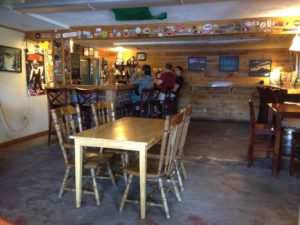
One of my highlights of the day was a stop at the Brickside Brewery in Copper Harbor. A couple of 40ish hippies own it, very engaging fellows who are living their entrepreneurial dreams. I didn’t sample the fish truck outside but it seemed to be quite the popular stop.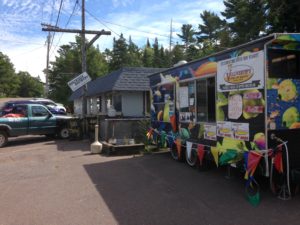
It was a great day of exploring with great weather. Life is good.

